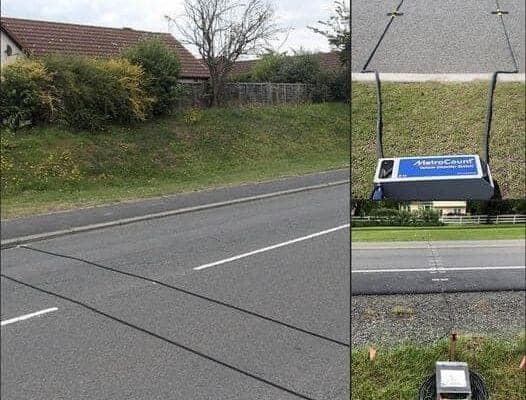If you ever see black cables stretching..
Actually, these little black cables are temporary traffic counters installed deliberately by transportation authorities for research needs. Mostly employed by municipal agencies, these tubes provide essential understanding of traffic patterns and road usage. More than 12,000 of these traffic counters dot the state, they offer priceless information that drives the design and construction of our road systems. Cracking the Mechanism Underlying the Black Cables Driving these discreet rubber cords is technology that is stunningly simple yet incredibly powerful.
Every time a car’s tires touch the tube, an air burst sets off an electrical signal noted by a counter device. Over a set period, this clever pneumatic system can monitor the car count over a route. Examining the intervals between these air bursts helps transportation authorities understand when there is more traffic congestion. These tubes give considerably more rich data when used in pairs, which helps to determine vehicle class, speed, and direction. Such data is far from meaningless; it provides the foundation for well-informed choices on road signs, speed restrictions, and distribution of transportation funds. These revelations help governments to adjust their traffic control plans so that road systems stay safe and effective for every user. Road tubes: Beyond mere counting Although these pneumatic road tubes serve primarily for traffic counting, their value goes much beyond simple counting.
These subtle tools are multi-dimensional data collectors, which greatly helps to improve our road system and guarantees seamless traffic flow. The operating nuances of these tubes are illuminated by the U.S. Department of Transportation. A burst of air pressure produced as a vehicle’s tires travel the rubber tube closes an air switch sending an electrical signal to a counter device. Each of these tubes has different uses and can be set up either as temporary or permanent installations. While permanent sites give constant, in-depth monitoring, temporary deployments—often lasting only a day—offer brief peeks into traffic dynamics. Targeting straight lengths of road for best data collecting, transportation officials carefully place these black cables in regions with low interference. Single-tube systems let agencies track vehicle counts and vehicle intervals between vehicles. Using linked tubes, the system explores the nuances of traffic, gathering axle count, direction, and speed. These little tubes can come in use when urban road planning runs across obstacles. Should citizens express worries about shortcutting or speeding, these tubes are used to look into and support claims. Their produced data helps to shape transportation budgets and the use of sensible solutions. Ultimately, you will be able to grasp the complex web of data these enigmatic black wires create behind the scenes the next time you come across them spanning the road. These modest tools act as silent watchers, catching the pulse of our highways and directing the choices influencing our travel scene. Remember as you pass over these tubes that they are the pulse of our changing road systems, not only what first greets the sight.



